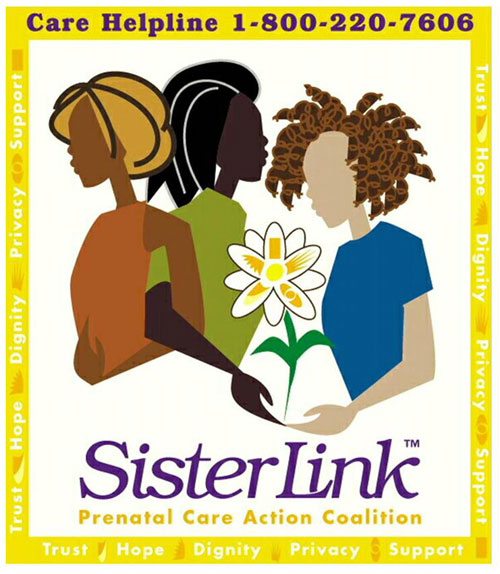By Katti Gray
With the mortality rate for Black Wisconsin infants among the highest and most unrelenting in the nation, that state’s largest public university has become co-manager of a $10 million grant to help prevent baby deaths.
The University of Wisconsin at Madison School of Medicine and Public Health, partnering with a consortium of community organizations, will partly model the venture after a groundbreaking New York City program that has cut infant mortality in a 1,500-unit Harlem high-rise housing project from 27.7 to 6.1 deaths per 1,000 live births over a decade ending in 2008. Like the Northern Manhattan Perinatal Partnership, the Wisconsin effort is “based on the assumption that the problem of African-American infant mortality extends back through the entire life course of African-American females,” said Dr. Philip Farrell, a semi-retired neonatologist, former University of Wisconsin medical school dean and co-chairman of the Lifecourse Initiative for Healthy Families steering committee.
It targets the cities of Beloit, Kenosha, Milwaukee and Racine, where Black babies—with 15.2 deaths per 1,000 births in 2008, the latest year for which the data are available—are three to four times more likely to die before their first birthday than White babies. “It’s a huge problem,” said Dr. Ron Cisler, a University of Wisconsin professor and director of its Center for Urban Population Health on Milwaukee campus. “If you drill down to areas where people are segregated [along] racial and socio-economic lines, you see higher problems in health overall.”
The range of ailments for Black babies include a disproportionate number who weigh dangerously little at birth, die of Sudden Infant Death Syndrome or are at risk for accidental suffocation because their mothers sleep with them. “For example,” Cisler said, where there are “multiple families living in a residence, known areas of poverty, drug activity, other unsafe activity, firearms and a number of other things—in the mother’s mind, maybe the safest place for that baby is beside her.” Infant cribs are being distributed as part of the Lifecourse project, which Cisler and Farrell describe as a holistic campaign whose outcomes hinge largely on the range of participating community groups. “It’s building a coalition among coalitions,” Cisler said. “When you get a number of groups working together … you can fill in the gaps that may have never been filled before. I’m hopeful that this broad-based framework will pull the best of the best together.”
At-risk pregnant women also will be paired with “big sisters,” mentors who will “help her with prenatal care, navigating the medical system, and not just drop her once the baby is born but provide” guidance as the baby grows and on through any additional pregnancies that might occur, said Farrell, who began his career as a National Institutes of Health researcher and has worked for the Centers for Disease Control.
As the Lifecourse Initiative now enters its second phase—the first was devoted to creating a workable construct and identifying community partners—it will begin fully funding those community organizations, collaborating with them and documenting the overall performance of that partnership.
“We’re hoping this investment will allow us to attract and leverage more dollars so that we can support even more interventions,” said Lorraine Lathen, a global health consultant, program leader of the Lifecourse Initiative and the university’s chief partner in the project. “We’re looking at the non-health-related situations that can lead to poor birth outcomes. Our project is really focused on systems change, looking at increasing access to health care for women throughout their life span, not just waiting until they become pregnant.”
The Lifecourse model, birthed in his Harlem agency, also is aimed at “transforming the behavior and outlook of child-bearing women,” said Mario Drummonds, executive director of the perinatal non-profit.
During his half-dozen or so visits to Milwaukee since the mid-2000s, Drummonds helped the Wisconsin partners develop their own strategy, sharing what worked and what didn’t in New York City.
So did Dr. Michael Lu, an obstetrics-gynecology professor at the University of California at Los Angeles, a researcher at UCLA’s Center for Healthier Children, Families, and Communities and its School of Public Health. The efforts in Wisconsin and Harlem are “really the direction we need to be moving this nation in,” said Lu, one of Drummonds’ collaborators. “The latest science shows that once you address infant mortality … [the health] of everybody in the household gets better.”
The issue of infant mortality is a nuanced one, Lu added, not easily summed up as one dictated solely by poverty. Infant mortality also tends to be higher for Black women of academic pedigree and means, Lu said.
The stresses of a race-obsessed society are believed to factor in. And, added Farrell, a growing body of research is pointing toward genetic contributors to some infant deaths. Still, Lifecourse mainly will target such concerns as the absenteeism of some African-American fathers, employment training and readiness, improving and increasing social supports for child-bearing women, addressing untreated urinary tract infections and other ailments that disproportionately are counted among those women, Farrell said. “There are multiple causes for the disparity, perhaps a dozen factors that we believe strongly influence pregnancy outcomes,” he said, adding that he is encouraged by the present momentum in Wisconsin’s assault against infant deaths.
“We work collaboratively and synergistically. It’s like a marriage; we’re equal partners,” Farrell said. Said New York City’s Drummonds: “The university is providing forward motion on this … . There are now the resources and dollars to actually drive the work on the ground.”


